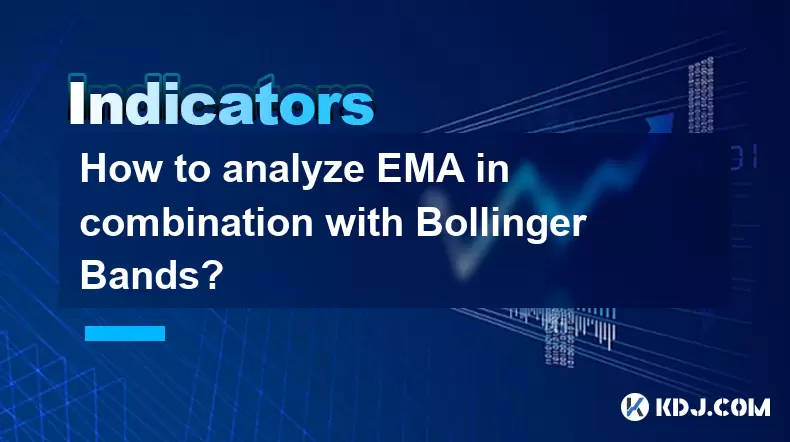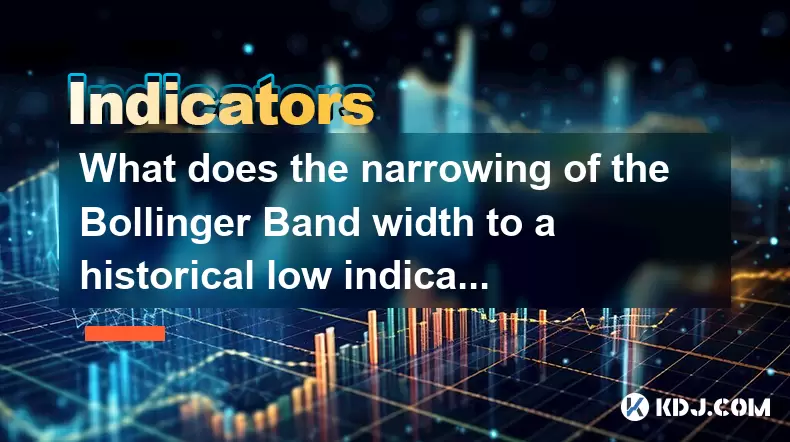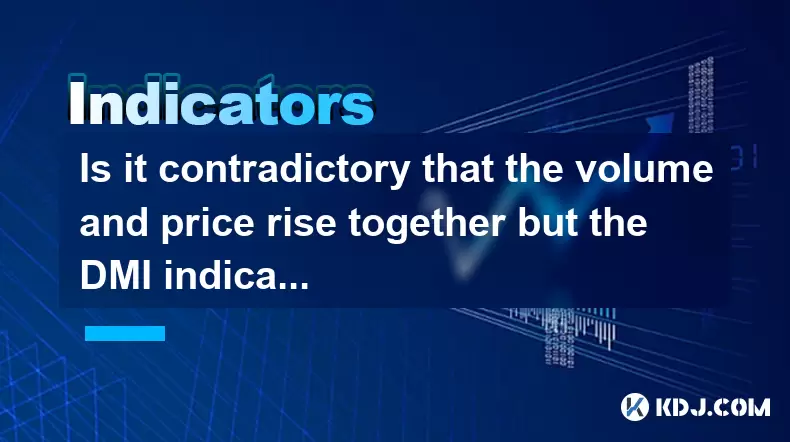-
 Bitcoin
Bitcoin $101,898.5005
-0.75% -
 Ethereum
Ethereum $2,258.1125
-1.07% -
 Tether USDt
Tether USDt $1.0004
0.01% -
 XRP
XRP $2.0178
-2.93% -
 BNB
BNB $624.0243
-1.53% -
 Solana
Solana $134.3298
-0.90% -
 USDC
USDC $0.9999
0.01% -
 TRON
TRON $0.2675
-2.05% -
 Dogecoin
Dogecoin $0.1538
-1.96% -
 Cardano
Cardano $0.5482
-1.11% -
 Hyperliquid
Hyperliquid $35.5636
5.45% -
 Bitcoin Cash
Bitcoin Cash $453.4902
-1.66% -
 Sui
Sui $2.5134
-2.97% -
 UNUS SED LEO
UNUS SED LEO $9.1292
1.77% -
 Chainlink
Chainlink $11.8457
-1.60% -
 Stellar
Stellar $0.2312
-2.73% -
 Avalanche
Avalanche $16.9721
0.29% -
 Toncoin
Toncoin $2.7549
-3.82% -
 Shiba Inu
Shiba Inu $0.0...01081
-1.10% -
 Litecoin
Litecoin $80.8250
-0.71% -
 Hedera
Hedera $0.1374
0.21% -
 Monero
Monero $305.4827
-2.36% -
 Ethena USDe
Ethena USDe $1.0006
0.00% -
 Dai
Dai $1.0000
-0.01% -
 Polkadot
Polkadot $3.2085
-3.12% -
 Bitget Token
Bitget Token $4.0845
-3.13% -
 Uniswap
Uniswap $6.3353
-1.63% -
 Pi
Pi $0.5085
-0.70% -
 Pepe
Pepe $0.0...08913
-3.82% -
 Aave
Aave $232.7090
-0.58%
How to analyze EMA in combination with Bollinger Bands?
Combining EMA and Bollinger Bands helps crypto traders identify trends and optimal entry/exit points, enhancing trading strategies with confirmed signals and risk management.
May 22, 2025 at 05:35 pm

Analyzing the Exponential Moving Average (EMA) in combination with Bollinger Bands is a powerful method used by many traders in the cryptocurrency market to make informed trading decisions. This approach combines the trend-following capabilities of the EMA with the volatility and price level insights provided by Bollinger Bands. In this article, we will delve into how to effectively use these tools together to enhance your trading strategy.
Understanding EMA and Bollinger Bands
EMA, or Exponential Moving Average, is a type of moving average that places more weight on recent prices, making it more responsive to new information. This is particularly useful in the fast-moving crypto markets. The formula for calculating the EMA is:
[ \text{EMA}{\text{today}} = (\text{Price}{\text{today}} \times \text{Multiplier}) + (\text{EMA}_{\text{yesterday}} \times (1 - \text{Multiplier})) ]
where the Multiplier is calculated as ( \frac{2}{(\text{Time period} + 1)} ).
Bollinger Bands, on the other hand, consist of a middle band being an N-period simple moving average (SMA), an upper band at K standard deviations above the middle band, and a lower band at K standard deviations below the middle band. Typically, N is set to 20 periods and K to 2 standard deviations. The formula for the upper and lower bands is:
[ \text{Upper Band} = \text{Middle Band} + (K \times \text{Standard Deviation}) ]
[ \text{Lower Band} = \text{Middle Band} - (K \times \text{Standard Deviation}) ]
Setting Up Your Chart
To begin analyzing EMA in combination with Bollinger Bands, you need to set up your trading chart correctly:
- Open your preferred trading platform and select the cryptocurrency pair you want to analyze.
- Add the EMA indicator to your chart. Choose a shorter period for a more sensitive EMA (e.g., 9 periods) and a longer period for a less sensitive EMA (e.g., 21 periods).
- Add the Bollinger Bands indicator to your chart. Ensure the settings are standard, with a 20-period SMA and 2 standard deviations.
Identifying Trends with EMA
The first step in combining EMA with Bollinger Bands is to identify the overall trend using the EMA:
- If the shorter EMA (e.g., 9-period EMA) is above the longer EMA (e.g., 21-period EMA), it indicates a bullish trend.
- If the shorter EMA is below the longer EMA, it indicates a bearish trend.
This trend identification is crucial because it sets the stage for your subsequent analysis with Bollinger Bands.
Using Bollinger Bands for Entry and Exit Points
Once you have identified the trend using the EMAs, you can use Bollinger Bands to determine potential entry and exit points:
- In a bullish trend, look for buying opportunities when the price touches the lower Bollinger Band. This suggests that the price might be temporarily oversold and could rebound.
- In a bearish trend, consider selling or shorting when the price touches the upper Bollinger Band. This indicates that the price might be overbought and could fall.
Combining EMA Crossovers with Bollinger Band Breakouts
A more advanced technique involves combining EMA crossovers with Bollinger Band breakouts:
- A bullish signal is generated when the shorter EMA crosses above the longer EMA and the price breaks above the upper Bollinger Band. This suggests strong upward momentum.
- A bearish signal is generated when the shorter EMA crosses below the longer EMA and the price breaks below the lower Bollinger Band. This indicates strong downward momentum.
Confirming Signals with Price Action
To increase the reliability of your signals, always confirm them with price action:
- Look for candlestick patterns that support the signal. For example, a bullish engulfing pattern at the lower Bollinger Band during a bullish EMA crossover can provide a strong buy signal.
- Pay attention to volume. A breakout accompanied by high volume is more likely to be sustained than one with low volume.
Managing Risk with Stop-Losses
Effective risk management is essential when trading cryptocurrencies. Use the Bollinger Bands to set your stop-losses:
- In a long position, place your stop-loss just below the lower Bollinger Band to protect against significant downturns.
- In a short position, place your stop-loss just above the upper Bollinger Band to safeguard against sudden upward movements.
Practical Example
Let's walk through a practical example of using EMA and Bollinger Bands to make a trading decision:
- Assume you are analyzing Bitcoin (BTC) against the US Dollar (USD) on a 4-hour chart.
- You notice that the 9-period EMA is above the 21-period EMA, indicating a bullish trend.
- The price touches the lower Bollinger Band, suggesting a potential buying opportunity.
- You check the candlestick pattern and see a bullish engulfing pattern at the lower Bollinger Band, reinforcing the buy signal.
- You decide to enter a long position on BTC/USD, placing your stop-loss just below the lower Bollinger Band.
- As the price moves upward and breaks above the upper Bollinger Band, you consider taking partial profits while keeping the rest of your position open to ride the trend further.
Frequently Asked Questions
Q: Can I use different time periods for the EMA and Bollinger Bands?
A: Yes, you can adjust the time periods based on your trading style and the specific cryptocurrency you are analyzing. Shorter periods will make the indicators more sensitive to price changes, while longer periods will provide a smoother trend line.
Q: How do I handle false signals when using EMA and Bollinger Bands?
A: False signals are common in trading. To mitigate them, always confirm signals with additional indicators or price action patterns. Additionally, using a longer time frame can help filter out noise and reduce the frequency of false signals.
Q: Is it necessary to use both a shorter and a longer EMA?
A: Using both a shorter and a longer EMA helps in identifying the trend more accurately. The shorter EMA reacts quickly to price changes, while the longer EMA provides a more stable trend line. Together, they offer a comprehensive view of the market direction.
Q: Can EMA and Bollinger Bands be used for all cryptocurrencies?
A: Yes, these indicators can be applied to any cryptocurrency pair. However, the effectiveness may vary depending on the liquidity and volatility of the specific cryptocurrency you are trading. Always backtest your strategy on historical data before applying it to live trading.
Disclaimer:info@kdj.com
The information provided is not trading advice. kdj.com does not assume any responsibility for any investments made based on the information provided in this article. Cryptocurrencies are highly volatile and it is highly recommended that you invest with caution after thorough research!
If you believe that the content used on this website infringes your copyright, please contact us immediately (info@kdj.com) and we will delete it promptly.
- VanEck, Pudgy Penguins, and Nasdaq: A New York Minute on Crypto's Big Moves
- 2025-06-24 01:05:12
- Ripplecoin Cloud Mining: Earn Daily Crypto Rewards?
- 2025-06-24 00:25:13
- SEI Price Prediction: Crypto Analyst Sees Potential Jump to $0.30!
- 2025-06-24 01:05:12
- Dogecoin, Cardano, and Crypto Security: Navigating the Wild West
- 2025-06-24 00:45:12
- Dogecoin Price Analysis and Ozak AI: Riding the Crypto Wave in Style
- 2025-06-24 00:45:12
- Neo Pepe Presale: The Next Big Meme Coin?
- 2025-06-24 00:32:08
Related knowledge

How to interpret that the time-sharing chart shows "volume and price rise together" but the MACD red column shortens?
Jun 24,2025 at 01:08am
Understanding the Concept of 'Volume and Price Rise Together'In cryptocurrency trading, when a time-sharing chart shows that both volume and price rise together, it is typically interpreted as a sign of strong buying pressure. This means more traders are entering long positions, pushing the price higher while increasing the trading volume. This phenomen...

Is it contradictory that the moving average system is arranged in a bullish pattern but the DMI shows a decline in trend strength?
Jun 23,2025 at 11:43pm
Understanding the Moving Average and DMI RelationshipIn cryptocurrency trading, technical analysis plays a crucial role in identifying potential trends and making informed decisions. Two of the most commonly used indicators are the Moving Average (MA) and the Directional Movement Index (DMI). While both tools aim to provide insight into market direction...

How to interpret that the Williams indicator quickly turns back in the overbought area but does not fall below the 50-axis?
Jun 24,2025 at 02:01am
Understanding the Williams %R Indicator in Cryptocurrency TradingThe Williams %R indicator, often referred to as Williams Percent Range, is a momentum oscillator used by traders to identify overbought or oversold conditions in financial markets, including cryptocurrency. It ranges from 0 to -100, where values above -20 are considered overbought and thos...

What is the significance of the gap formed by the gap opening not being filled within five days?
Jun 23,2025 at 09:42pm
Understanding Gaps in Cryptocurrency TradingIn the world of cryptocurrency trading, a gap refers to a situation where the price of an asset jumps from one level to another without any trading activity occurring between those two levels. This often happens over weekends or holidays when the market is closed, and significant news or events occur that impa...

What does the narrowing of the Bollinger Band width to a historical low indicate?
Jun 24,2025 at 02:35am
Understanding Bollinger Bands and Their Role in Technical AnalysisBollinger Bands, developed by John Bollinger in the 1980s, are a popular technical analysis tool used to measure market volatility. They consist of three lines: a simple moving average (SMA) in the center, typically over a 20-period setting, and two outer bands that are set at a standard ...

Is it contradictory that the volume and price rise together but the DMI indicator shows that the trend strength decreases?
Jun 24,2025 at 01:00am
Understanding the Relationship Between Volume, Price, and DMIIn the world of cryptocurrency trading, it is common for traders to analyze multiple indicators simultaneously to form a comprehensive view of market conditions. Volume and price are two of the most basic and widely used metrics in technical analysis. When both volume and price rise together, ...

How to interpret that the time-sharing chart shows "volume and price rise together" but the MACD red column shortens?
Jun 24,2025 at 01:08am
Understanding the Concept of 'Volume and Price Rise Together'In cryptocurrency trading, when a time-sharing chart shows that both volume and price rise together, it is typically interpreted as a sign of strong buying pressure. This means more traders are entering long positions, pushing the price higher while increasing the trading volume. This phenomen...

Is it contradictory that the moving average system is arranged in a bullish pattern but the DMI shows a decline in trend strength?
Jun 23,2025 at 11:43pm
Understanding the Moving Average and DMI RelationshipIn cryptocurrency trading, technical analysis plays a crucial role in identifying potential trends and making informed decisions. Two of the most commonly used indicators are the Moving Average (MA) and the Directional Movement Index (DMI). While both tools aim to provide insight into market direction...

How to interpret that the Williams indicator quickly turns back in the overbought area but does not fall below the 50-axis?
Jun 24,2025 at 02:01am
Understanding the Williams %R Indicator in Cryptocurrency TradingThe Williams %R indicator, often referred to as Williams Percent Range, is a momentum oscillator used by traders to identify overbought or oversold conditions in financial markets, including cryptocurrency. It ranges from 0 to -100, where values above -20 are considered overbought and thos...

What is the significance of the gap formed by the gap opening not being filled within five days?
Jun 23,2025 at 09:42pm
Understanding Gaps in Cryptocurrency TradingIn the world of cryptocurrency trading, a gap refers to a situation where the price of an asset jumps from one level to another without any trading activity occurring between those two levels. This often happens over weekends or holidays when the market is closed, and significant news or events occur that impa...

What does the narrowing of the Bollinger Band width to a historical low indicate?
Jun 24,2025 at 02:35am
Understanding Bollinger Bands and Their Role in Technical AnalysisBollinger Bands, developed by John Bollinger in the 1980s, are a popular technical analysis tool used to measure market volatility. They consist of three lines: a simple moving average (SMA) in the center, typically over a 20-period setting, and two outer bands that are set at a standard ...

Is it contradictory that the volume and price rise together but the DMI indicator shows that the trend strength decreases?
Jun 24,2025 at 01:00am
Understanding the Relationship Between Volume, Price, and DMIIn the world of cryptocurrency trading, it is common for traders to analyze multiple indicators simultaneously to form a comprehensive view of market conditions. Volume and price are two of the most basic and widely used metrics in technical analysis. When both volume and price rise together, ...
See all articles
























































































